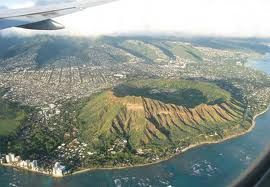“Punting the Pundits” is an Open Thread. It is a selection of editorials and opinions from around the news medium and the internet blogs. The intent is to provide a forum for your reactions and opinions, not just to the opinions presented, but to what ever you find important.
Thanks to ek hornbeck, click on the link and you can access all the past “Punting the Pundits”.
Follow us on Twitter @StarsHollowGzt
Dean Baker: What does the Fed have to do with Social Security? Plenty
Fed policies directly affect the future of Social Security’s finances
Most of the people who closely follow the Federal Reserve Board’s decisions on monetary policy are investors trying to get a jump on any moves that will affect financial markets. Very few of the people involved in the debate over the future of Social Security pay much attention to the Fed. That’s unfortunate because the connections are much more direct than is generally recognized.
The basic story of Social Security’s finances is that, while the program is entirely sound for the near future, the program is projected to face a shortfall in the 2030s. Under current law, at that point it will be necessary to reduce benefits from their scheduled level unless additional revenue can be raised.
Of course, the answer from those on the right is to cut benefits, the sooner the better. Progressives, along with most of the public overall, would like to see current benefit levels maintained and possibly increased. Most workers are approaching retirement with little other than Social Security to support them, which means that cuts from currently scheduled benefit levels would mean serious hardship for many.
Bob Herbert: The Fire This Time
I remember the stunned reaction of so many Americans back in the summer of 2005 when legions of poor black people in desperate circumstances seemed to have suddenly and inexplicably materialized in New Orleans during the flooding that followed Hurricane Katrina.
Expressions of disbelief poured in from around the nation: “How can this be [..]
It was ever thus: Some tragic development occurs; the media spotlight homes in on black people who had previously been invisible; instant experts weigh in with their pompous, uninformed analyses; and commitments as empty as deflated balloons are made. This time it’s Ferguson, Missouri, in the spotlight. And you can bet the mortgage that this time will be no different.
Representative Paul Ryan’s response to the shooting death of Michael Brown by Ferguson, Missouri, police was fairly straightforward: say nothing, do nothing. “We should take a deep breath, let’s have some sympathy for the family and the community, and let’s not prejudge anything, and let’s let the investigation take its course and hope that justice is served appropriately,” he told Fox News on Tuesday. “But what I don’t want to do as a political leader is try to graft my policy initiatives or my preferences onto this tragedy.”
It was not a great moment in the Republican Party’s alleged outreach to minority communities, which Ryan has been championing, but this silence is a bipartisan affair. Many politicians on both sides of the aisle, with a few valuable exceptions, have by and large avoided what’s happening in Missouri entirely.
Most of the candidates likely to contend for the presidency in 2016 have been silent. Hillary Clinton, who has been eager in recent weeks to opine extensively on national issues as she embarked on a book tour, has acted as if the situation isn’t happening.
Anna Feigenbaum: The National Guard protects Ferguson’s police, not its people
Backing a militarized police force with civilian soldiers makes a mockery of the right to protest
On August 16, Missouri Governor Jay Nixon called National Guard troops into Ferguson to “ensure the safety and welfare of the citizens.” This call came amid international debate over the militarized police response to protests that were sparked by the police killing of unarmed teenager Michael Brown. Commentators have questioned why, on top of heavily armed riot teams, the governor needs the National Guard?
Rarely deployed to deal with civilian unrest, in most instances National Guard troops lay sandbags and hand out bottles of water. But as troops turned up in Ferguson on Monday clad in military fatigues and equipped with rifles, they aroused memories of America’s past.
In Ferguson these civilian soldiers were clearly not there to just hand out water. As Monday night’s imagesof excessive force showed, the National Guard was called in to protect the police, not the people. Through wafts of tear gas, with guns ready, these troops provided military backup to an already militarized police force. For many, this is like rubbing salt in a community’s wounds. And as a closer look at the history of National Guard deployments makes clear – from Kent State to the Los Angeles riots – its presence often serves to justify police violence.
Robert Reich: The Disease of American Democracy
Americans are sick of politics. Only 13 percent approve of the job Congress is doing, a near record low. The president’s approval ratings are also in the basement.
A large portion of the public doesn’t even bother voting. Only 57.5 percent of eligible voters cast their ballots in the 2012 presidential election.
Put simply, most Americans feel powerless, and assume the political game is fixed. So why bother?
A new study scheduled to be published in this fall by Princeton’s Martin Gilens and Northwestern University’s Benjamin Page confirms our worst suspicions.
Gilens and Page analyzed 1,799 policy issues in detail, determining the relative influence on them of economic elites, business groups, mass-based interest groups, and average citizens.
Their conclusion: “The preferences of the average American appear to have only a miniscule, near-zero, statistically non-significant impact upon public policy.”
Clay Calvert: Honor Journalist James Foley: Don’t Watch the Video
If the early reports are correct and journalist James Foley was, in fact, executed by ISIS, you can honor him — and not play into the terroristic hands of that organization — simply by not watching the video of his murder.
Video voyeurism of the worst variety exists when we feast on the death of journalists who strive, through their reporting, to keep our society free. Resist the temptation to take even the briefest of looks.
A dozen years have passed since Wall Street Journal reporter Daniel Pearl was killed by terrorists in Pakistan. The images from that tragedy are still haunting today. [..]
It’s been a tough enough stretch of days for journalists being arrested in Ferguson, Mo., but Foley’s apparent execution even puts those arrests into perspective when it comes to the dangers of being a journalist.
And if the reports of his death are wrong, then that would be the very best news to report.


 Hawaii’s natural beauty, warm tropical climate, inviting waters and waves, and active volcanoes make it a popular destination for tourists, surfers, biologists, and volcanologists alike. Due to its mid-Pacific location, Hawaii has many North American and Asian influences along with its own vibrant native culture. Hawaii has over a million permanent residents along with many visitors and U.S. military personnel. Its capital is Honolulu on the island of Oahu.
Hawaii’s natural beauty, warm tropical climate, inviting waters and waves, and active volcanoes make it a popular destination for tourists, surfers, biologists, and volcanologists alike. Due to its mid-Pacific location, Hawaii has many North American and Asian influences along with its own vibrant native culture. Hawaii has over a million permanent residents along with many visitors and U.S. military personnel. Its capital is Honolulu on the island of Oahu.
Recent Comments